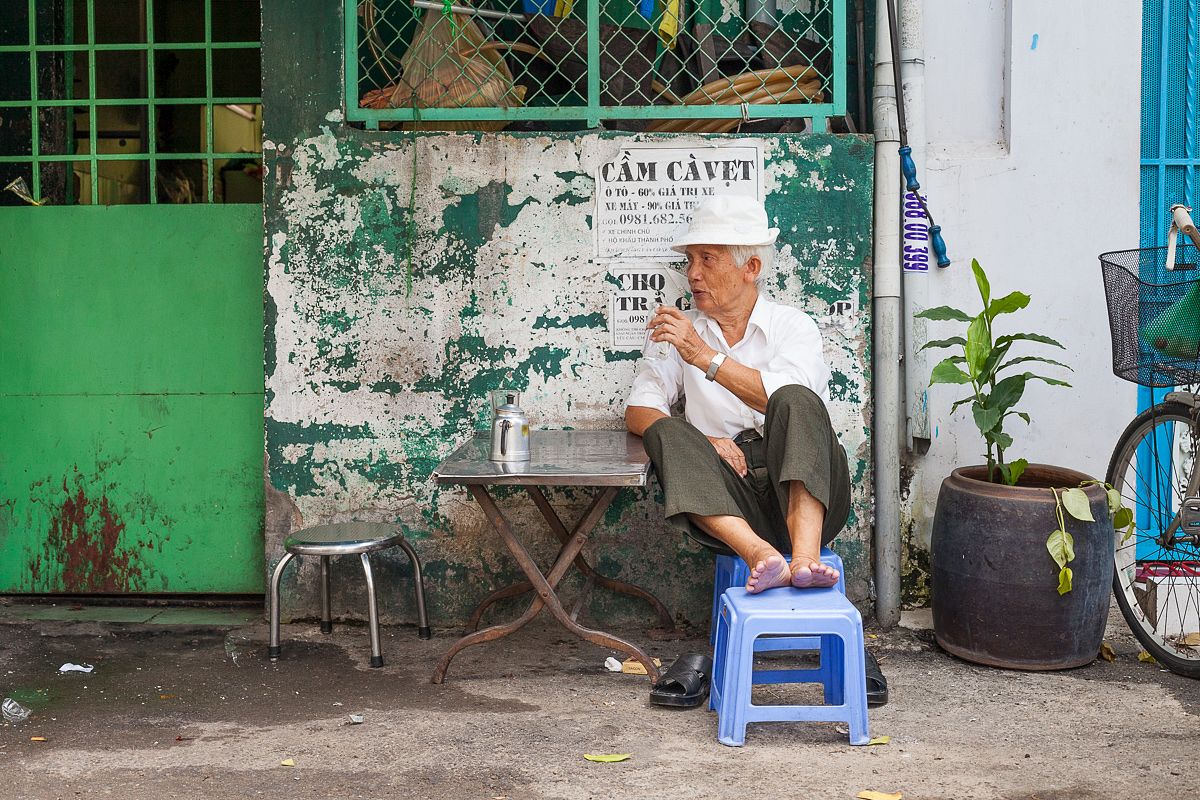Vietnam is among the world’s most rapidly changing countries, by virtually every metric.
Until 1995, Vietnam’s tallest building was the 15-storey Osic Building — the blue-glassed 70s-build towering over Ho Chi Minh City’s low-lying landscape for two decades at all of 200 feet. Today, 25 years later, the Vincom Landmark 81 — a 1,513-foot sky-needle completed in 2018 — dominates the city skyline and Vietnam’s tallest structures list, with the stubby Osic not even registering in the top 50.
Economically, too, Vietnam became among the world’s fastest growing economies during the 1990s as a consequence of the Đổi Mới economic reforms welcoming a flood of foreign investment, resulting in Gross Domestic Product per capita rising from US$95 in 1990, to US$2,715 in 2019.
But beyond facades and finances, a report published last week in medical journal The Lancet highlighted among the most radical shifts occurring in Vietnam today, a demographic one. Published by the Global Burden of Disease Study, the findings predicted that Vietnam’s population is set to start declining by 2044, a decade earlier than initially predicted, as fertility levels continue to drop.
This, combined with a rising life expectancy, means Vietnam is one of the fastest-ageing societies in the world, with the country’s fast-receding collective hairline presenting with it challenges — and perhaps even opportunities — aplenty.
Ageing populations are a global trend, with the UN estimating that the number of people 60 and over is set to increase from 901 million to more than 1.4 billion worldwide between 2015 and 2030. On paper, too, Vietnam remains a relatively young nation, with a median age of 31.9, ranking 112 of 228 globally.

Photo by Nhac Nguyen/AFP.
But according to World Bank senior economist Nga Nguyet Nguyen, it is the country’s speed of ageing that distinguishes it, detailing in a recent email that it is “taking place at a faster pace and at an earlier level of development than most other countries in the world”.
“With falling fertility rates and rising life expectancies, Vietnam became an ageing society in 2015 and is projected to become aged in 2035,” she said.
While around 7% of Vietnam’s population (around six and a half million people) are currently over 65, it is predicted that this will double to 14% of the total population by 2035, the threshold for an aged society. In comparison to the 15-20 years this is set to take Vietnam, it took some of the world’s most-aged societies like France (115 years), Sweden (85 years) and the US (69 years) considerably longer to reach this threshold.
Longer lives, inevitably, are an essential prerequisite for any ageing society, with Vietnam’s life expectancy increasing from 59 in the midst of war in 1960 to 75 in 2018. But Naomi Kitahara, the United Nations Fund for Population Activities (UNFPA) representative in Vietnam, emphasized Vietnam’s rapid decline in fertility as the most influential factor in its greying populace.
“In recent decades, Vietnam has made very good socio-economic progress,” she said, highlighting the inverse relationship between prosperity and birth rates.
“Fertility began to decline in Vietnam from the mid-1960s. The total fertility rate, the number of children a woman has in her lifetime, was between six and seven until the early 1960s. It declined to 4.8 in 1979 and then continued to decline, reaching replacement level fertility of 2.1 since 2006.”
With this rapid ageing inevitably comes pressing and immediate challenges.

Photo by Sebastia Galbany.
A phenomenon that more commonly evolves over decades in developed nations, ageing is generally accompanied by well-established social safety nets and healthcare for the elderly.
But rapid ageing in Vietnam’s social and economic context, or “getting old before getting rich,” as Nguyen puts it, presents unique challenges, with it happening at much lower income levels than those seen in the world’s oldest societies in East Asia and Europe.
The World Bank’s 2016 report Live Long and Prosper: Aging in East Asia and Pacific argued that the biggest risks from ageing in Vietnam are fiscal, driven by rising spending on pensions, healthcare and, over time, long-term care systems.
In November last year, Tuoi Tre quoted Bui Sy Loi, a member of the Committee on Social Affairs, as saying that the number of people joining Vietnam’s workforce had dropped by more than half to about 400,000 each year. As birth rates drop and the number of retirees increases, Vietnam’s working-age population as a whole is projected to be on the decline by 2030, according to UNFPA’s Kitahara.
In an economy set to feel the effects of the pandemic-induced global economic downturn for some time yet, a shrinking workforce is a heavy weight to bear.
“Doing this [mitigating the high fiscal costs of ageing] while still at relatively low per capita income levels requires making hard choices and implementing major policy reform,” Nguyen said.
This policy reform includes raising the retirement age in Vietnam, as announced late last year that starting in 2021, the male age would increase by three months per year, while the female retirement age would increase by four months per year — rising from 60 to 62 for men and 55 to 60 for women.
Vietnamese cultural shifts raise further concerns over elderly care in the country. Traditional support structures, rooted in the family unit and community, have become less secure as the country rapidly develops and Vietnam’s younger generations no longer want to live in multigenerational houses, instead flooding into urban centers.
“This demographic transition is happening in an economy which relies on family transfers and private savings as the basic source of old age support, rather than on public programs, while rapid urbanization and migration are eroding this system,” Nguyen said.
With Vietnam building from “a very low base,” according to Nguyen, the country is scrambling to rapidly expand social programs, such as welfare, pensions and health insurance, to plug gaps left by traditional familial structures. Currently, while Vietnam’s income per capita has increased substantially since 2014, with all the associated rises in consumer goods prices that entails, its social welfare for the elderly has remained static at around US$11.70 per month.

Photo by Brandon Coleman.
“The number of older persons entitled to social assistance and social work services is very small compared to actual needs in society,” she said. “Around 1% [of elderly care] is being taken in institutional care centers and daycare centers.”
But while economists fear that Vietnam’s fiscal productivity is at risk of being anchored by its growing cohort of elders, the old adage that age is just a number could prove an invaluable guiding principle out of this scenario.
According to the World Economic Forum, in a piece entitled The myth of an “ageing society,” a society’s ageing effect can be offset by its “longevity effect,” in which people are biologically younger and healthier for longer.
Better longevity among a population means less economic burden, as people are able to be economically productive for longer and less in need of support and healthcare interventions. Currently, although Vietnam’s population enjoys a higher life expectancy, its age of health remains poor, with up to 67% of elderly people in weak or very weak states of health, an outcome often seen with rapidly ageing societies.
Encouraging greater longevity among a population is something that requires policy and behavioral change from “womb to tomb,” according to Nguyen.
“At the micro level, public policy and behavioral responses can mitigate the immediate negative impacts of ageing,” she said. “Evidence increasingly points toward the importance of early childhood health and nutrition as predictors of poor health in old age.”
Ageing also presents economic opportunities, as demographic shifts result in shifts in consumption patterns, with services associated with the elderly offering avenues for market expansion.
“Population ageing also brings about opportunities to expand the local market and investment for goods and services targeting older people, including health care,” Kitahara said.
But while rapid ageing brings with it unavoidable challenges, ultimately the presence of a growing cohort of elderly people can be regarded as a metric of success for a country that endured decades of warfare and poverty.
For Kitahara, it’s the intangible benefits beyond economics associated with this trend that remain most under-appreciated.
“Older people carry with them stocks of knowledge, expertise and skills that can be valuable for society,” she said. “Older people help bring in good knowledge, wisdom and values.”
This article was originally published by Southeast Asia Globe.














